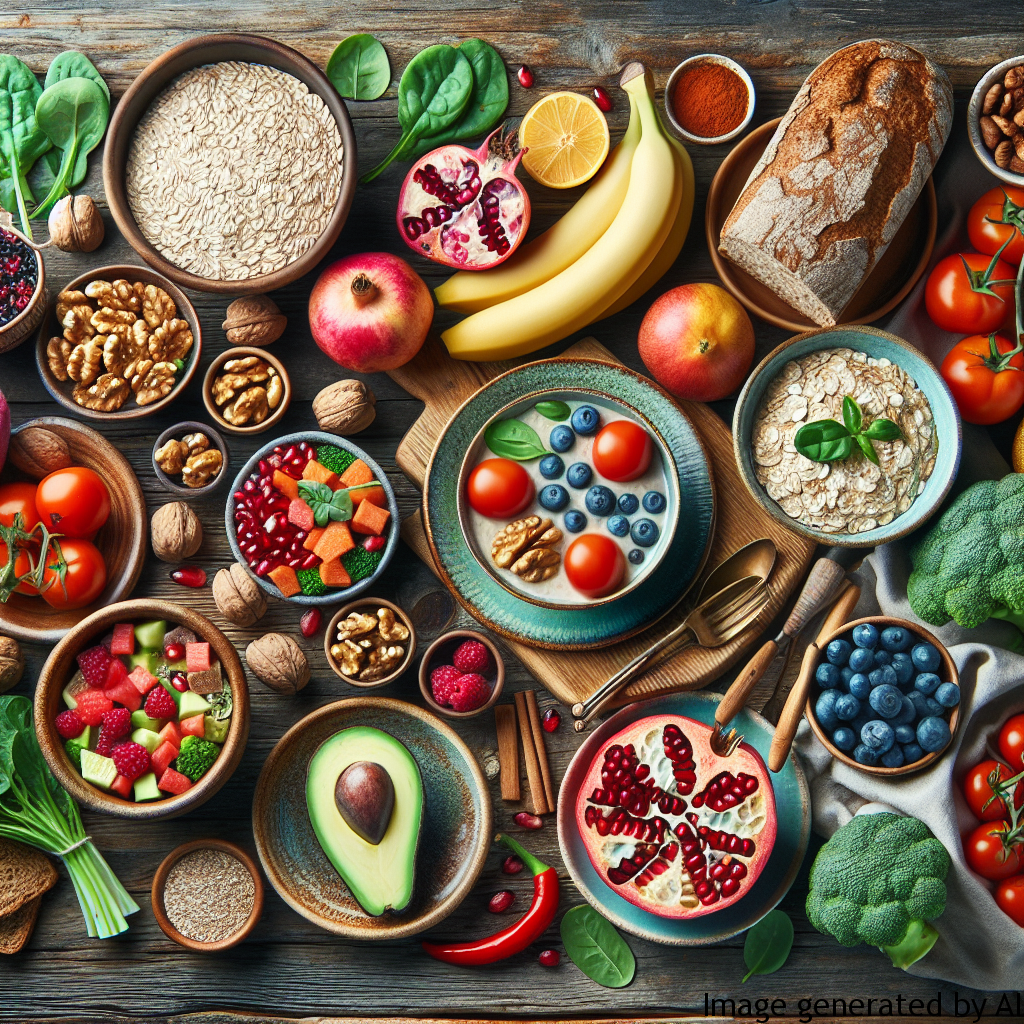Introduction
The vascular system, also known as the circulatory system, plays a vital role in our overall health and wellness. This extensive network of vessels transports blood, oxygen, and nutrients throughout the body, supporting every vital organ. As such, maintaining good vascular health is imperative. One key to accomplishing this is through our diet. There are specific foods beneficial to vascular health that can enhance blood flow, reduce inflammation and lower blood pressure. This article will discuss such foods and provide helpful advice for including them in your regular diet.
Foods That Boost Vascular Health
What you eat directly influences the health of your vascular system. Here are a few foods packed with nutrients that can support vascular health:
Leafy Green Vegetables
Vegetables like spinach, collard greens, and kale are rich in dietary nitrates, which your body can convert into nitric oxide. Nitric oxide aids in widening blood vessels, improving blood flow and lowering blood pressure.
Fatty Fish
Fish such as salmon, mackerel, and sardines are great sources of omega-3 fatty acids. These nutrients are known to decrease blood pressure and inflammation that can lead to vascular diseases.
Whole Grains
Whole grains like oats, brown rice, and whole wheat bread are high in dietary fiber that can help to lower the risk of heart disease by reducing levels of”bad” LDL cholesterol.
Nuts and Seeds
Nuts and seeds are an excellent source of Vitamin E, an antioxidant that prevents the development of plaque in your arteries, thus improving blood flow.
Beets
Beets are loaded with nitric oxide, which relaxes and dilates blood vessels, thereby enhancing blood flow and lowering blood pressure.
Incorporating These Foods Into Your Diet
Regularly including these foods in your diet can help to improve your vascular health. Here are some simple and delicious ways:
Salads and Smoothies
Add leafy greens and high-nitrate vegetables like beets to your salads or smoothies. They pair well with almost anything and can be easily incorporated into daily meals.
Whole Grain Swaps
Start switching your regular rice, pasta or bread with whole grain varieties. Not only do they contain more fiber, but they also offer a different, heartier flavor.
Fish Two to Three Times a Week
Include fatty fish in your meals at least two to three times a week, either grilled, steamed, or baked.
Nuts and Seeds as Snacks
Instead of reaching for unhealthy snacks, opt for a handful of assorted nuts and seeds. These can also be sprinkled on salads, porridge, or yogurt for that extra nutritional punch.
Conclusion
The foods above, along with regular exercise and lifestyle management, can greatly contribute to maintaining your vascular health. Always remember, you are what you eat. With a few dietary changes here and there, you can ensure that your vascular system is functioning optimally for years to come.

